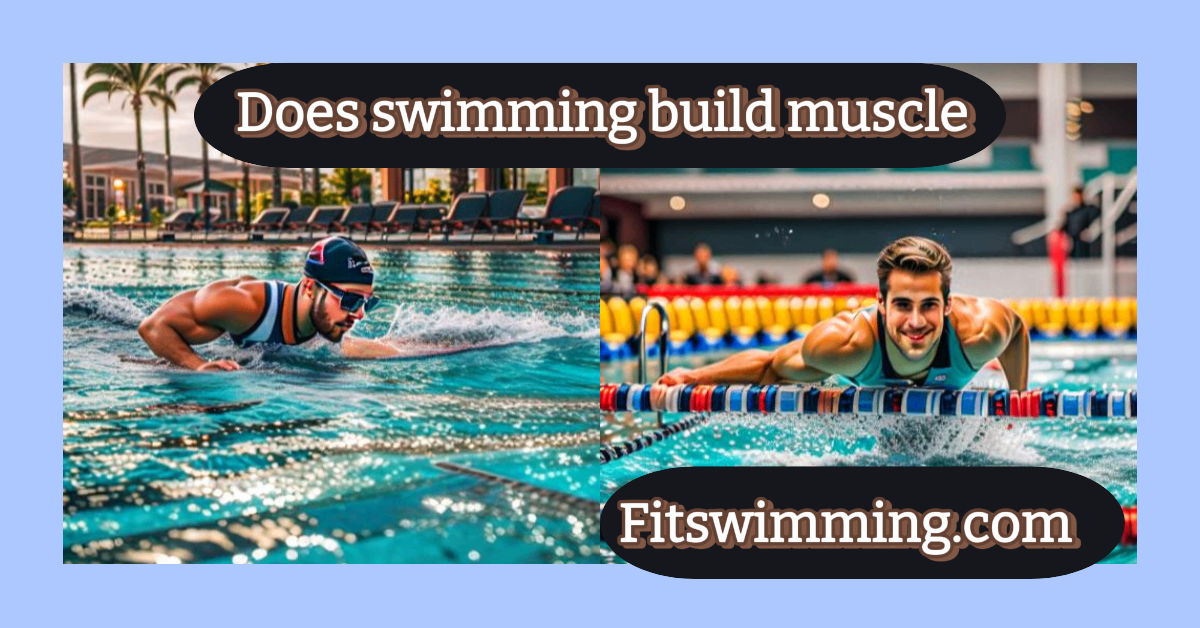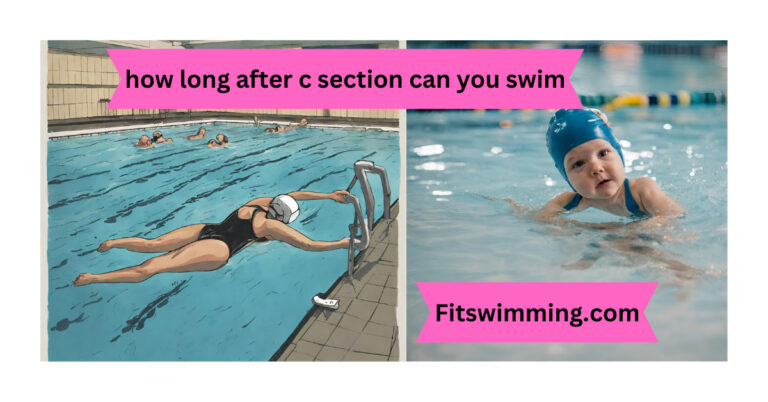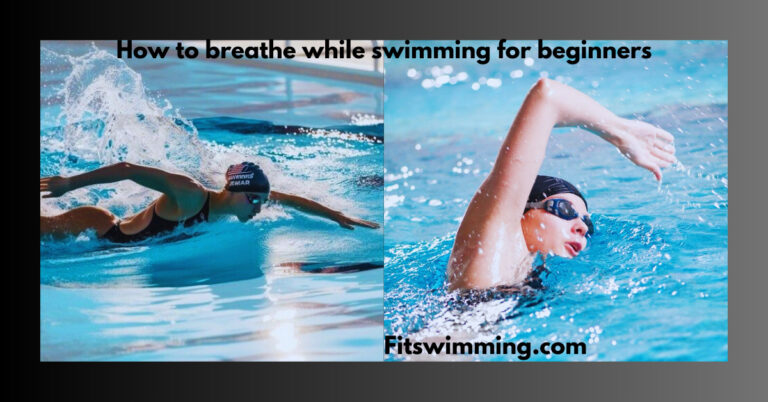Does Swimming Build Muscle? Let’s Dive In!
Have you ever wondered if that refreshing dip in the pool could do more than excellent you off? The answer could make you like your time in the water even more. Today, we’re diving into the question: Does swimming build muscle?
It’s a common query, especially for those who enjoy the serene and weightless feeling of swimming. Let’s explore the incredible ways that swimming can contribute to muscle development and why it might just be the workout you’ve been looking for.
Understanding Muscle Building
Building muscle usually involves lifting weights. Yes, but not exclusively. Muscles grow when they face resistance, and that’s where swimming comes into play. Even though it might not feel the same as lifting dumbbells, the water provides a different resistance that works your muscles.
Are you interested in how swimming could make you taller? Check out this article to explore the intriguing connection between swimming and height gain.
Does Swimming Build Muscle

Yes, swimming can help build muscle. When you swim, your body encounters resistance from the water, engaging various muscle groups—different strokes and techniques in swimming work other muscles, contributing to overall muscle development.
Here’s how swimming can help build muscle:
Full-Body Workout: Swimming is a full-body exercise that involves your arms, legs, core, and back muscles. Moving through the water all the time makes your muscles work all over your body.
Resistance Training: Water provides natural resistance, requiring your muscles to work harder. This resistance is particularly beneficial for muscle strength and endurance.
Cardiovascular Exercise: While primarily known for its cardiovascular benefits, swimming also contributes to muscle building. Swimming makes your heart beat faster and helps blood flow better, making your whole body healthier.
Low-Impact Exercise: Swimming is kind to your joints, so it’s good for people with joint problems or those getting better from injuries. The low-impact nature allows for consistent training without excessive stress on the muscles and joints.
Variety of Strokes: Different swimming strokes target specific muscle groups. For example, freestyle works the muscles in your arms and shoulders, breaststroke engages the leg muscles, and butterfly stroke challenges your core strength.
What Muscles Does Swimming Build
Swimming is a really good workout for your whole body, using lots of different muscles. The muscles worked during swimming depend on the strokes and techniques used. Here’s a simple explanation of which muscles each swimming stroke usually works:
Freestyle (Front Crawl): It mostly works the muscles in your shoulders, arms, and upper back. When you kick, it also works the muscles in your legs.
Breaststroke: Emphasizes the chest, shoulders, and arms muscles. The frog-like kicking motion works the muscles in the thighs and inner legs.
Backstroke: Focuses on the back, shoulders, and arms muscles. When you kick, it makes your leg muscles work.
Butterfly Stroke: Demands strong and coordinated movements, targeting the chest, shoulders, and arms. The dolphin kick engages the muscles in the core and legs.
Treading Water: Involves constant leg movement to stay afloat, working the muscles in the thighs and calves. Arm movements also engage the shoulders and arms.
Core Muscles: All swimming strokes require core stability to maintain balance and streamline in the water. This engages the muscles in the abdomen and lower back.
Cardiovascular System: Swimming is really good for your heart and helps make it stronger, which is great for your overall heart health.
Swimming Techniques for Muscle Building
Swimming offers various techniques that can specifically target different muscle groups. Here are some swimming techniques for muscle building:
Freestyle (Front Crawl): Freestyle predominantly targets the shoulders, arms, and upper back muscles. Tighten your tummy muscles and move your arms and legs in a steady, rhythmic way.
Breaststroke: Breaststroke emphasizes the chest, shoulders, and arms. Perform a frog-like kick, bringing your legs together, and use circular arm movements.
Butterfly Stroke: Butterfly stroke demands strength in the chest, shoulders, and arms. Perform a dolphin kick with simultaneous and powerful arm movements.
Kickboard Workouts: Using a kickboard can isolate and target the leg muscles. Hold onto the kickboard and kick your legs, focusing on building strength in the thighs and calves.
Resistance Training with Water: Utilize the resistance of the water for strength building. Perform exercises like water jogging, where the resistance challenges your leg muscles.
Interval Training: Mix short bursts of fast swimming with breaks in between. Swim high intensity for a specific distance or time, then recover with lighter strokes.
High-Intensity Intervals with Sprints: Improve how healthy your heart is and make lots of muscles work at the same time. Incorporate short sprints during your swim, alternating with slower-paced laps.
Underwater Kicking: Strengthening the leg muscles. Submerge yourself and perform powerful flutter kicks or dolphin kicks underwater.
Water Aerobics: A low-impact option for overall muscle engagement. Include aerobic exercises like leg lifts, arm circles, and resistance movements in the water.
Benefits of Swimming for Muscle Building
Swimming offers numerous muscle-building benefits, making it a fantastic full-body workout. Below are some key advantages:
Full-Body Engagement: Swimming makes many muscles work all at the same time. Swimming in different ways uses different muscles, giving your whole body a good and effective workout.
Resistance Training: Water resistance challenges muscles for strength building. The natural resistance of water requires your muscles to work harder, promoting muscle development over time.
Low-Impact Exercise: Gentle on joints, suitable for all fitness levels. Swimming is easy on your joints, so it’s good for people with joint problems or those getting better from injuries.
Improved Muscle Tone: Enhances muscle tone and definition. The continuous movement against water resistance helps sculpt and define muscles, contributing to a toned appearance.
Cardiovascular Fitness: Enhances heart health and cardiovascular endurance. Swimming is an excellent cardiovascular exercise that builds muscles and improves the efficiency of your heart and lungs.
Flexibility and Range of Motion: Supports flexibility and joint mobility. Swimming involves many motions, promoting flexibility and keeping joints supple.
Calorie Burning: Aids in weight management and fat loss. Swimming uses up a lot of calories, helping you lose weight and make strong, lean muscles.
Stress Reduction: Reduces stress on muscles and joints. The water helps your body float, which makes it easier on your joints. It creates a calm and comfortable place for you to exercise without stress.
Increased Endurance: Builds muscular endurance over time. Regular swimming sessions improve the endurance of muscles, allowing you to sustain physical activity for extended periods.
Versatility in Workouts: Various strokes and techniques provide workout versatility. Mixing different swimming styles targets other muscle groups, preventing monotony and engaging workouts.
Conclusion: Does Swimming Build Muscle? Let’s Dive In!
So, does swimming build muscle? Absolutely. It might not look like your typical weightlifting session, but the water’s resistance is a powerful force for muscle growth. Jump into the pool, have fun while you exercise, and see how your muscles feel! Thank you for the splashy exercise adventure!







